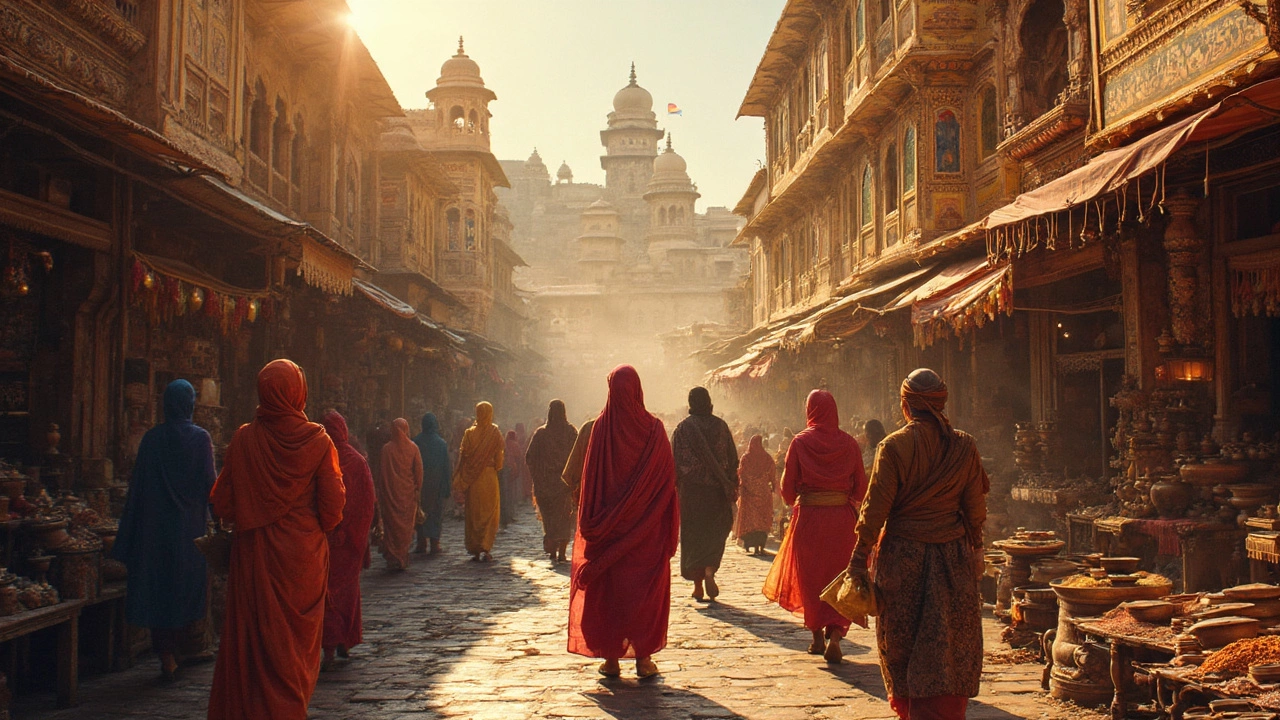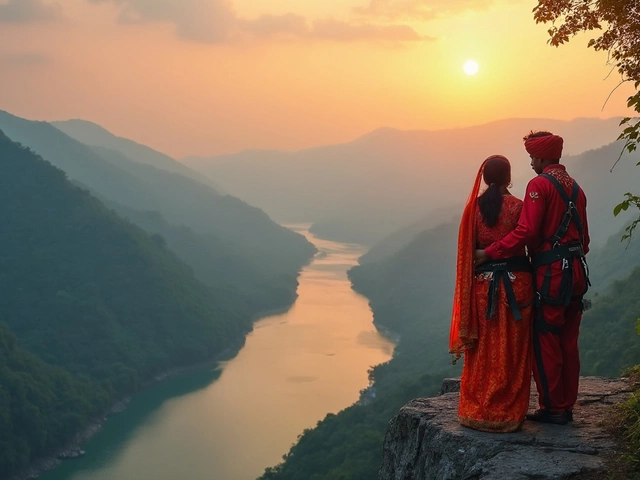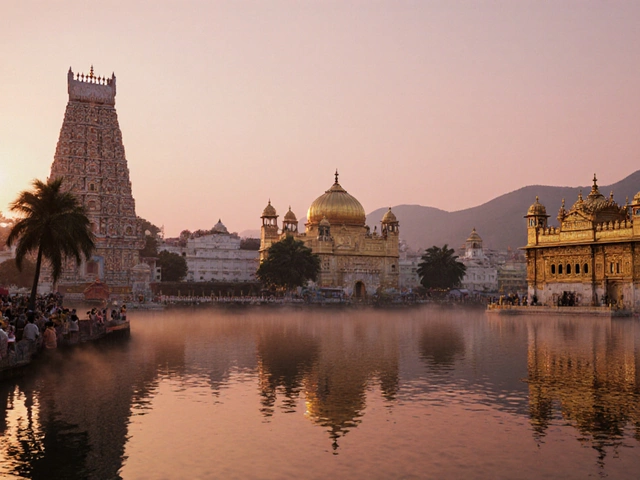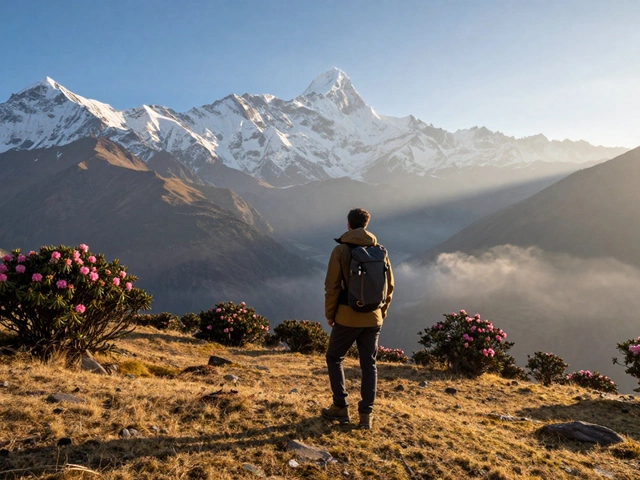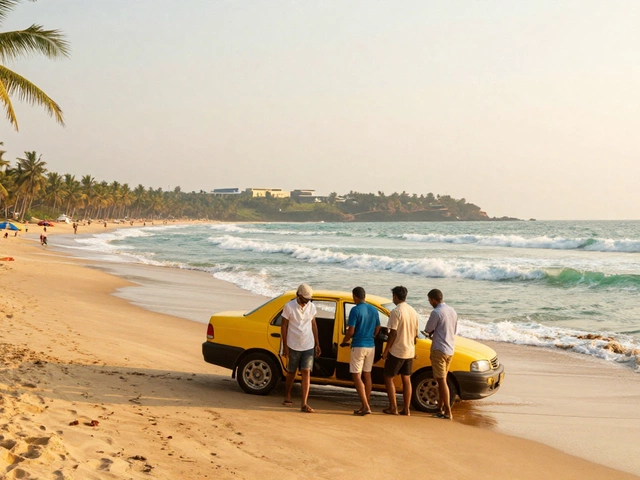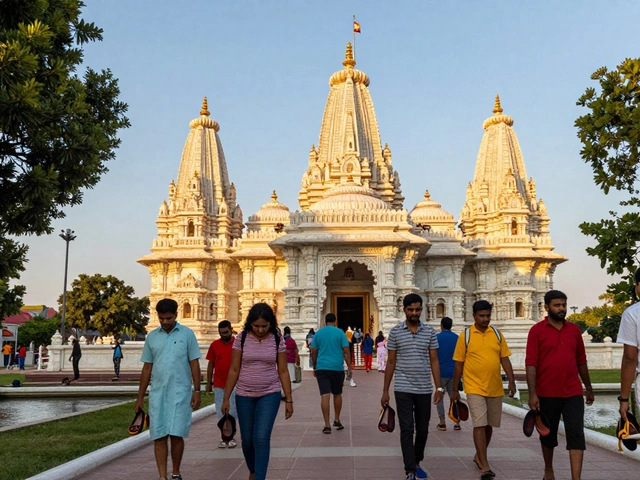Trying to figure out which state has the richest heritage in India? You’re not alone—this question sparks heated debates among travelers, historians, and even locals. India is loaded with states showing off their own flavor of history. But when you zoom in, Rajasthan is tough to beat. This is where royal forts touch the sky, palaces look like they belong in fairy tales, and every corner has a story waiting to surprise you.
But what makes heritage more than just old stone and dusty museums? It’s the way traditions still shape everyday life, how festivals light up entire cities, and how every bite of food tells its own story. If you want to experience heritage with all your senses, this is your state. And don’t just stick to the famous spots; there’s a ton more to uncover if you’re willing to get off the main tourist track.
- Why India's Heritage Isn't Just One Story
- Rajasthan: The Unbeatable Heritage Hotspot
- Cultural Mix: Festivals, Food, and Local Life
- Hidden Treasures Most Tourists Miss
- Tips for Exploring Heritage Like a Local
Why India's Heritage Isn't Just One Story
India is basically a mash-up of cultures, thanks to thousands of years of invasions, trade, and crossovers. You can't sum up its heritage sites India story in one line because there are so many different kinds of history packed into this one country. Think about it—Mughal forts in Uttar Pradesh, Dravidian temples down in Tamil Nadu, Buddhist caves carved in Maharashtra, Portuguese churches in Goa, and Sikh shrines in Punjab. That's a lot more than palaces and forts.
Every region has its own stamp. In the east, you get the colorful art and music of West Bengal. The south throws in spicy cuisines and ancient temples. The north is all grand forts, Mughal gardens, and snowy mountains teaming with Buddhist monasteries. Even the language changes—with 22 official languages and hundreds of dialects, the local stories get even richer.
For anyone chasing Indian culture, it's impossible to see the whole thing in one state. Each place celebrates different festivals (Durga Puja, Pongal, Pushkar Fair), eats different food, dresses differently, and sometimes even has its own laws protecting heritage spots. This is one reason UNESCO put so many Indian places on its World Heritage List—there’s just too much variety to miss.
Here’s a glimpse at the sheer numbers:
| State | UNESCO Heritage Sites | Main Heritage Type |
|---|---|---|
| Maharashtra | 5 | Caves, Forts |
| Rajasthan | 4 | Forts, Palaces |
| Tamil Nadu | 2 | Temples |
| Uttar Pradesh | 3 | Mughal Monuments |
| Karnataka | 2 | Temples, Ruins |
So, while Rajasthan takes the lead for sheer extravagance and famous spots, it’s only one chapter in India’s heritage book. The cool part? Each state has a unique slice of history to share. That’s what turns traveling in India into an adventure, not just a tour of historical places.
Rajasthan: The Unbeatable Heritage Hotspot
When you talk about heritage sites India is famous for, Rajasthan always pops up at the top. This state is packed with more forts, palaces, and old havelis than anywhere else. Jaipur’s Amber Fort, Jodhpur’s Mehrangarh Fort, Udaipur’s City Palace—each one is as full of life now as it was centuries ago. No wonder Rajasthan is called the Land of Kings.
Rajasthan claims the most UNESCO World Heritage Sites of any Indian state. These aren’t just dusty buildings either—they’re lively places with festivals, performances, and even stepwells you can walk down into. If you like stats, here’s a taste:
| City | Highlight Heritage Site | Year Recognized by UNESCO |
|---|---|---|
| Jaipur | Pink City | 2019 |
| Chittorgarh | Chittorgarh Fort | 2013 |
| Jaisalmer | Jaisalmer Fort | 2013 |
It’s not just about big places with ticket counters. Some heritage gems are free, like the blue houses in Jodhpur or the stepwells (baoris) in Abhaneri. Want a wild experience? Try a heritage hotel that was once a palace—many let you stay where real kings once lived.
Your camera roll will fill up fast, but it’s not only about the photos. Rajasthan has managed to turn its Indian culture and history into real, everyday life. Locals still wear traditional clothes, festivals like Teej and Gangaur actually matter, and crafts like blue pottery and tie-dye aren’t just for tourists—they pay the bills for entire families.
If you’re looking for historical places with actual soul, Rajasthan has you covered. You’ll go from ancient battlefields to royal thrones to colorful markets, all in a single day. The trick is to slow down and let the stories soak in, because every old wall in this state has something wild to tell you.
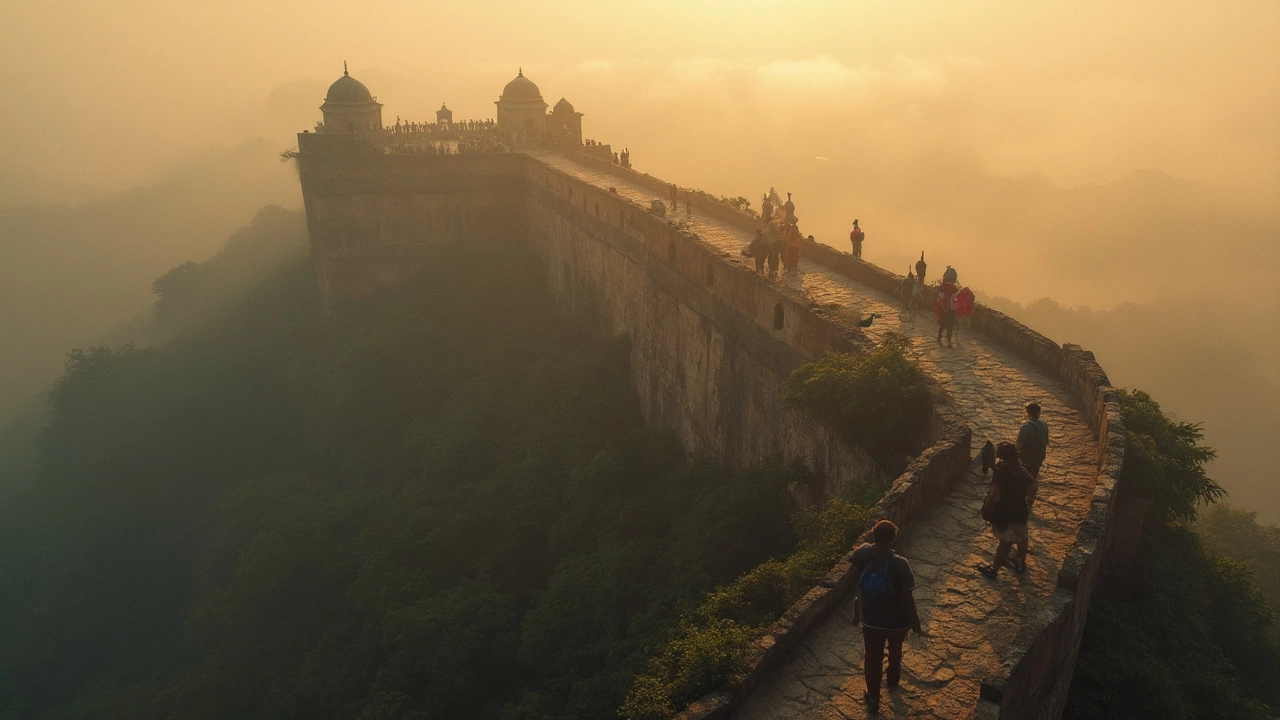
Cultural Mix: Festivals, Food, and Local Life
Rajasthan isn’t just big forts and palaces—the real magic is in the daily buzz on the streets, the loud and colorful festivals, and food that hits you with flavor. If someone asks what keeps the state’s heritage sites india vibe so alive, it’s this deep-rooted mix of culture you notice the second you step in.
Let’s talk festivals. Rajasthan does not do things halfway. The Pushkar Camel Fair turns a sleepy desert town into a massive party with camel races, local music, and the quirkiest moustache competitions. Then there’s Jaipur’s famous Teej festival—a blast of women dressed in green, dancing in the rain, and sweet shops working overtime. Diwali in Udaipur? You haven’t seen real sparkle until you see the whole lake city lit up and families throwing firecrackers by the water.
Food here is bold—no bland bites. Dal baati churma is the classic, and you’ll see it on every local table. Laal maas isn’t for the faint-hearted (seriously spicy mutton curry!), but if you can handle it, you’ve got a badge of honor. Don’t skip out on mirchi vada, kachori, or those endless sweets—people swear by the ghewar and mawa kachori from Jodhpur.
Now, real Indian culture lives in Rajasthan’s small towns and bazaar lanes. Families still gather to play folk music every week. Spinning, dyeing, and hand-block printing are more than old tricks; they’re everyday work you’ll see in villages like Bagru or Sanganer. Walking through a market, you’ll catch it all—the artisans haggling, street food vendors serving snack after snack, and groups of kids running around dressed up for the latest festival.
Here’s a quick peek at how heritage fits into everyday life:
- Festivals happen year-round—check calendars before booking so you don’t miss one.
- Most local dishes are vegetarian, but ask about hidden hot chilies before you dig in.
- Handicraft shopping is better in smaller towns—Jaipur for jewelry, Jodhpur for textiles, and Udaipur for miniature paintings.
- Locals are big on hospitality; expect to be offered chai or sweets at almost every stop.
If you want to see Rajasthan’s heritage, eat with a local, join a festival, and get into those busy markets—don’t just snap photos of forts.
Hidden Treasures Most Tourists Miss
If you think Rajasthan is just about Jaipur and Udaipur, you’re missing out on some real gems. Let’s get into the heritage sites India rarely posts about on Instagram, but they’re worth every minute of your time.
- Kumbhalgarh Fort: Sure, people talk about forts, but not everyone realizes the wall around Kumbhalgarh is the second longest in the world—right after the Great Wall of China. The nighttime sound and light show here is a completely different vibe than what you get at Amber Fort.
- Bundi: This little town is basically a time capsule. Walk down the blue lanes and you’ll barely see tourists, but you’ll see 17th-century stepwells, the painted Bundi Palace, and some of the most beautifully preserved murals in the country.
- Shekhawati Region: If jaw-dropping murals and havelis (old mansions) are your thing, Shekhawati delivers. Places like Mandawa and Nawalgarh have streets packed with intricate artwork that you can just wander around and admire for free—it’s an open-air museum with zero crowds.
- Osian: Think ancient temples minus the selfie sticks. Osian, near Jodhpur, is home to over a dozen incredibly detailed Hindu and Jain temples, some dating back to the 8th century.
- Chittorgarh Fort: Bigger is better, apparently. Chittorgarh is the largest fort in India and barely makes most travel shortlists, but it’s loaded with legends, deep history, and epic views.
Check this quick breakdown if you want an idea of what’s waiting off the main path:
| Spot | Main Highlight | Best Time to Visit |
|---|---|---|
| Kumbhalgarh Fort | Massive wall, light show | Nov–Feb |
| Bundi | Murals and stepwells | Oct–March |
| Shekhawati | Wall paintings, havelis | Nov–Feb |
| Osian | Ancient temples | Oct–March |
| Chittorgarh Fort | Historic fort, panoramic views | Oct–Feb |
Don’t just stick to the popular banners on travel sites. These lesser-known places are packed with stories and real culture. Plus, your photos are way less likely to be photobombed.
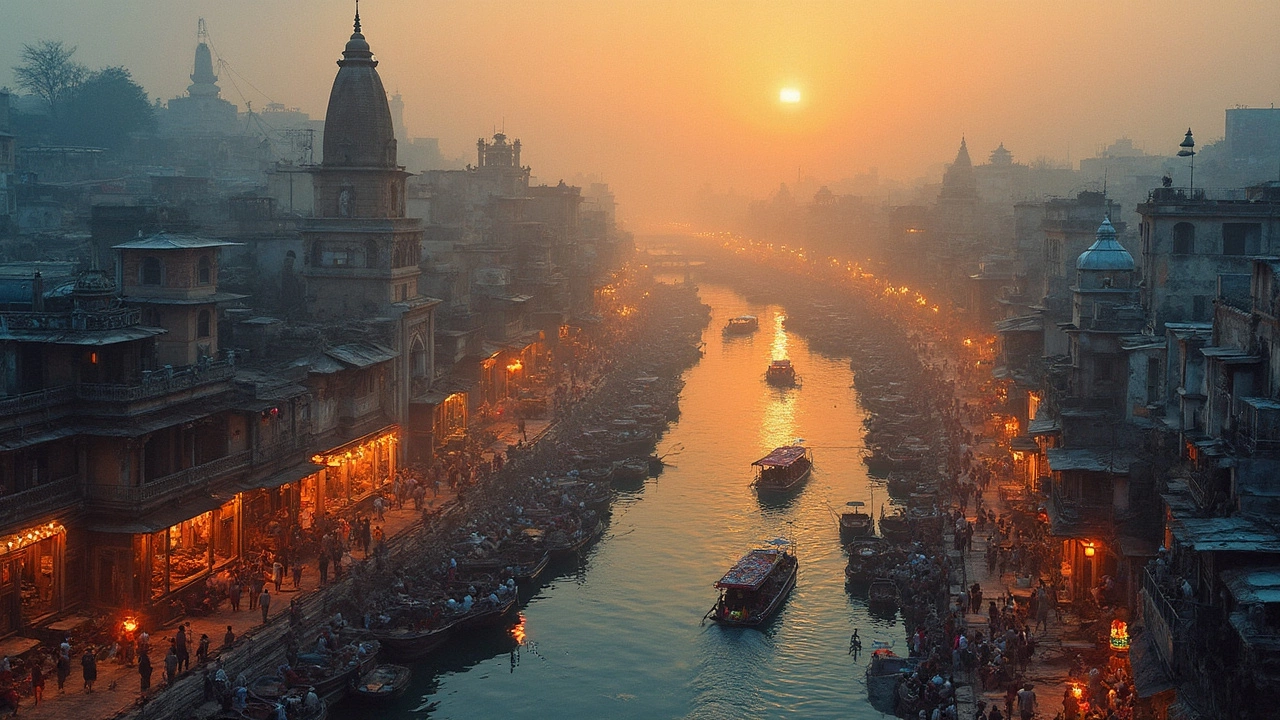
Tips for Exploring Heritage Like a Local
If you want to really feel Rajasthan’s heritage sites India vibe, ditch the usual coach tours. Locals have a completely different rhythm when they visit monuments or go on family outings. Here’s how you can join in:
- Go Early or Go Late: Most famous forts and palaces open by 8 am. Locals know it’s best to arrive with the sunrise—cooler, quieter, and no long lines. Or, arrive close to closing time when the crowds thin out. In Jaipur, Amer Fort is almost magical right when it opens.
- Visit During Festivals: Timing your trip with local festivals makes the experience stand out. The Pushkar Camel Fair and Jaipur Literature Festival don’t just attract crowds—they open up old havelis and streets to music, dance, and authentic Rajasthani snacks you won’t find any other time.
- Eat Where Locals Eat: Skip hotel buffets. Instead, follow families crowding tiny dhabas at lunchtime—think dal baati churma, laal maas, or kachoris. Most famous spots are way less fancy but full of stories.
- Try The Local Transport: Take a camel ride in Jaisalmer’s desert or squeeze into a shared tempo in Jodhpur instead of renting a private car everywhere. You’ll hear local gossip and catch conversations you’d miss in a taxi.
- Get a Local Guide—But Ask Questions: Most guides stick to set scripts, but locals love it when you’re curious. Ask them why a certain corner has a painted elephant or who’s buried inside that old cenotaph. Sometimes, a chai break with your guide reveals more than a plaque ever could.
Here’s a quick cheat sheet of practical stuff locals swear by:
| Tip | Why Locals Do It |
|---|---|
| Carry Cash | Entry to small monuments and food stalls is cash-only |
| Wear Light Scarves | Essential for entering temples & to block sun/dust |
| Avoid Mondays | Many top sites close or get sudden maintenance |
| Check Local Holidays | Streets/cities shut down unexpectedly |
| Talk to Shopkeepers | Best recommendations always come from the bazaar |
No need for any fancy strategies—just blend in, stay curious, and let Rajasthan’s Indian culture pull you in. At heritage places, the locals are the real hidden gem.
